Lobster Tail Pastry
This lobster tail pastry is a flaky, shell-shaped Italian dessert that features a crispy, golden outer shell made from laminated dough, a middle layer of light, airy choux pastry, and is filled with a sweet, creamy custard. Think of it as a cousin to the sfogliatelle – same crust different filling.
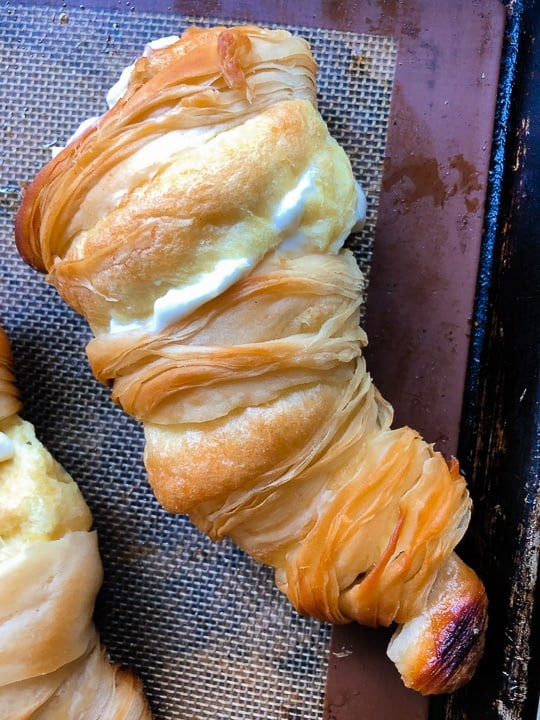
It is quite a challenge to make, so much so that many professional bakers do not make these, so make sure you are up for the challenge! Tips and tricks for success included.
These pastries are dangerous! Everyone is my family loves them – they are the perfect combination of sweet crunchy goodness filled with a light, creamy filling.
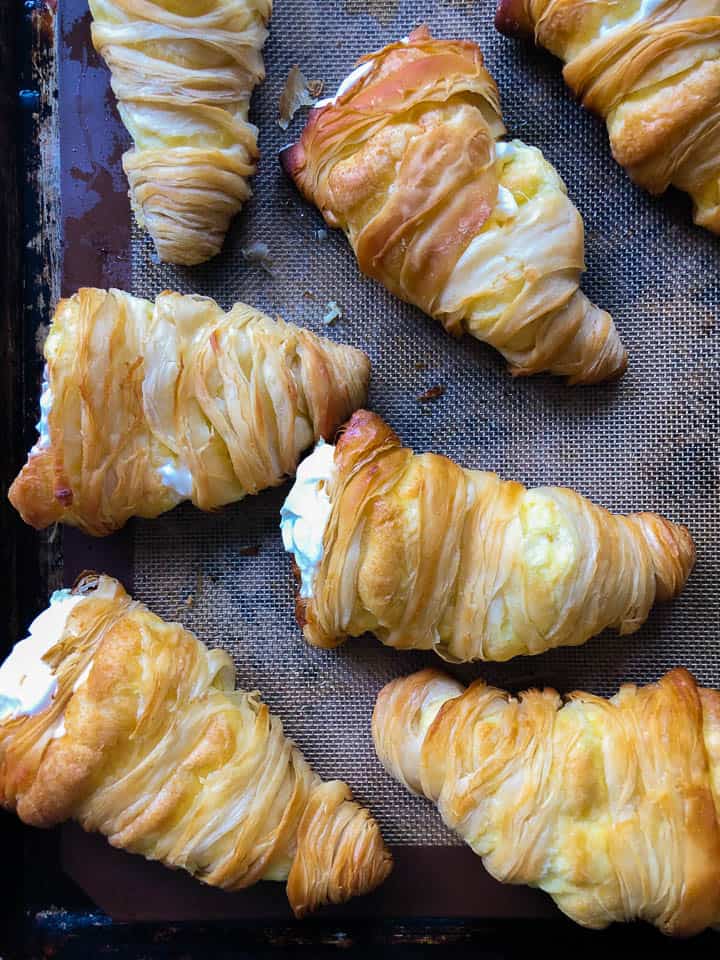
How to Make: Step by Step
No doubt, the most challenging part of this recipe is getting the outer crust right. You must be very patient! I found the most difficult step to be rolling the dough and applying the softened shorting to the thin dough because it is very easy to tear the dough.
Using a pasta machine is a must! In the bakery, they would use a dough sheeter. As you can see below, I also have a motor on my pasta machine instead of a hand crank to make things easier.

Suggested schedule, day 1 (make lobster tail pastry dough):
Mix and knead the dough for the exterior shell (see recipe below for this crispy layered outer shell).
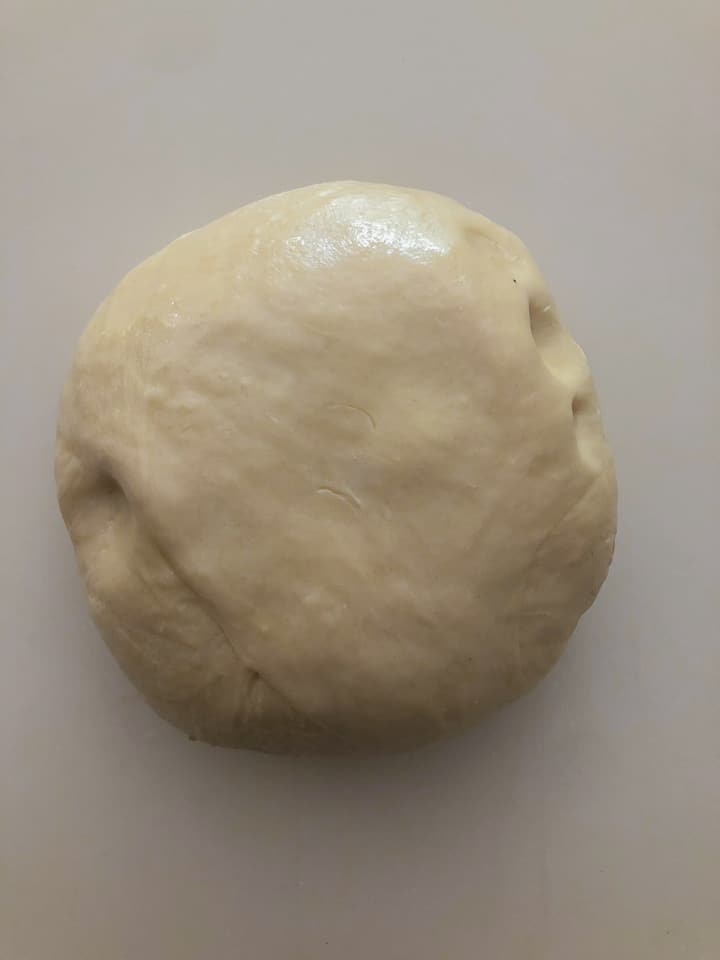
Refrigerate overnight
Suggested Schedule, Day 2 (beginning to assemble the lobster tail pastry dough)
Remove dough from the refrigerator and slice the dough into 4 pieces.
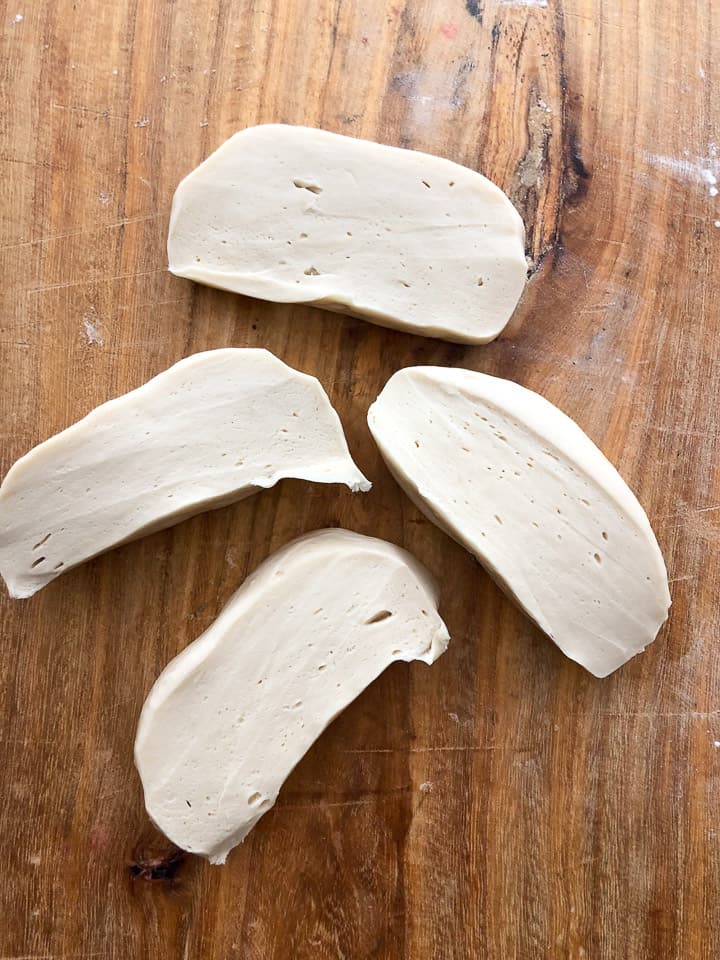
Flour your work surface and roll out the dough slightly with a rolling pin

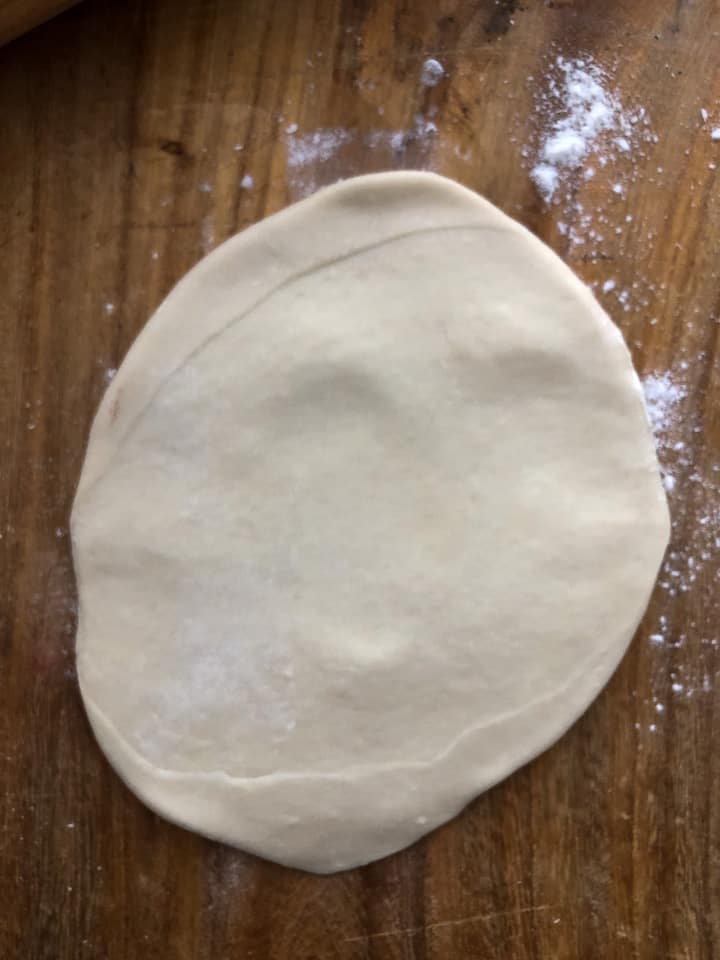
Add more flour to each side and begin passing the dough through a pasta machine beginning with the largest setting (that is a setting of “0”)

After passing through the “0” setting, pass through the settings of 1, followed by 2, then 3, and then 4 as shown here. Use a rolling pin to hold the dough but make sure you flour the dough well or it will stick!
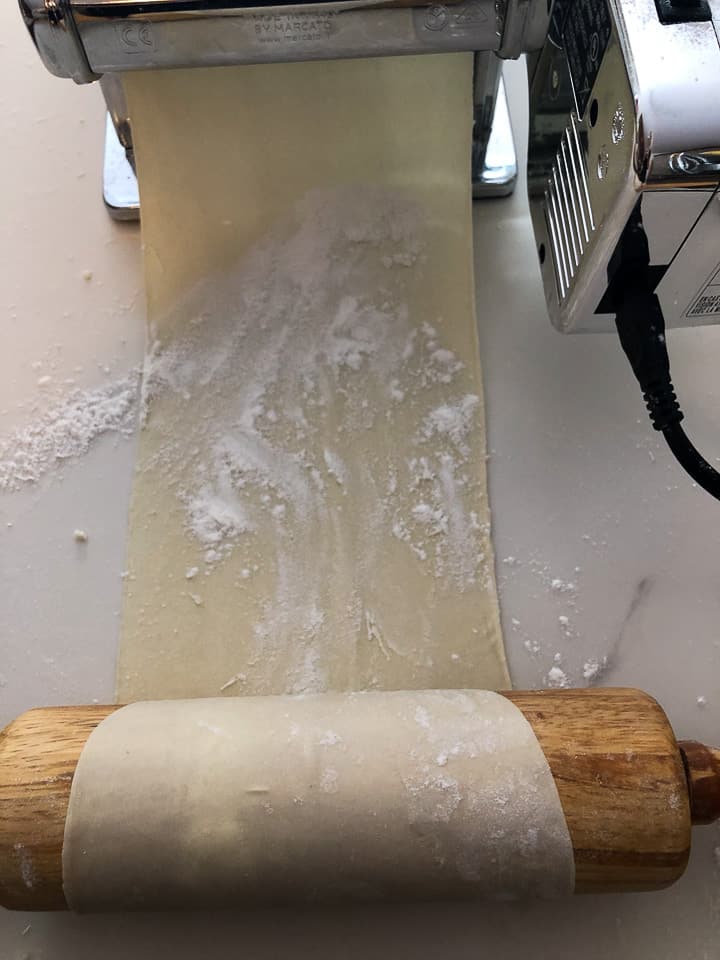
This is what your dough will look like after passing one of the four pieces through the final recommended setting of “6” – I don’t recommend going any thinner than the setting of 6. The dough should be rolled around a rolling pin but is shown here to you can see the length and thickness.

Next, carefully apply the shortening to the top of the thin sheet of dough (may use some on the other side too to prevent the dough from sliding around as you apply the shortening) and roll tightly into a cylinder/roll, pulling as you roll so it is tight and also stretching the width a bit more than it appears as it comes out of pasta machine, which limits the width.
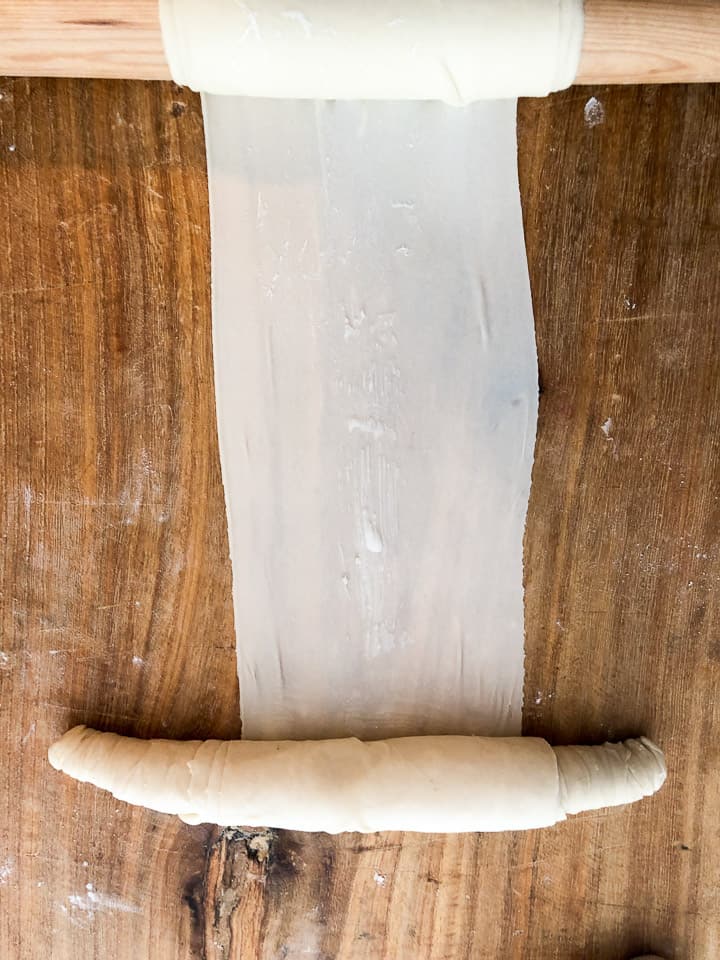
This is my softened shortening (I simply stirred it up to soften it but it may need to be slightly warmed depending on season/kitchen temperature)
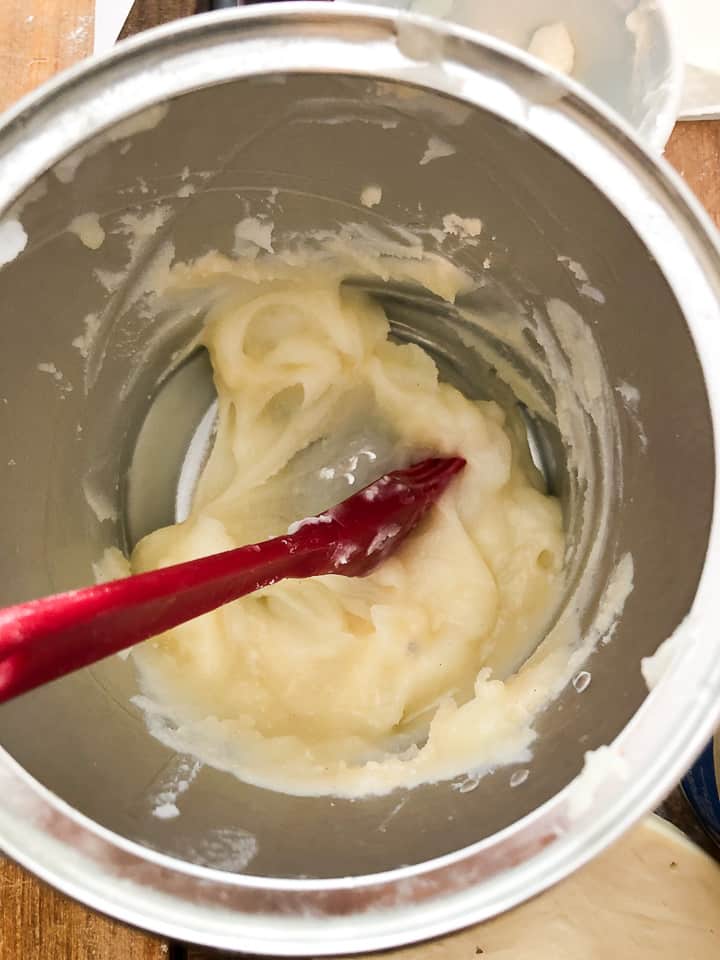
This is what my final roll/cylinder looked like – this is all four pieces of dough, rolled out thin, greased and then rolled (after you grease and roll the first piece you will continue by greasing and rolling the second, third, and fourth pieces of dough to make one big roll). Mine was about 3 to 4 inches in diameter and about 12 inches in length after I trimmed off the pointy ends.
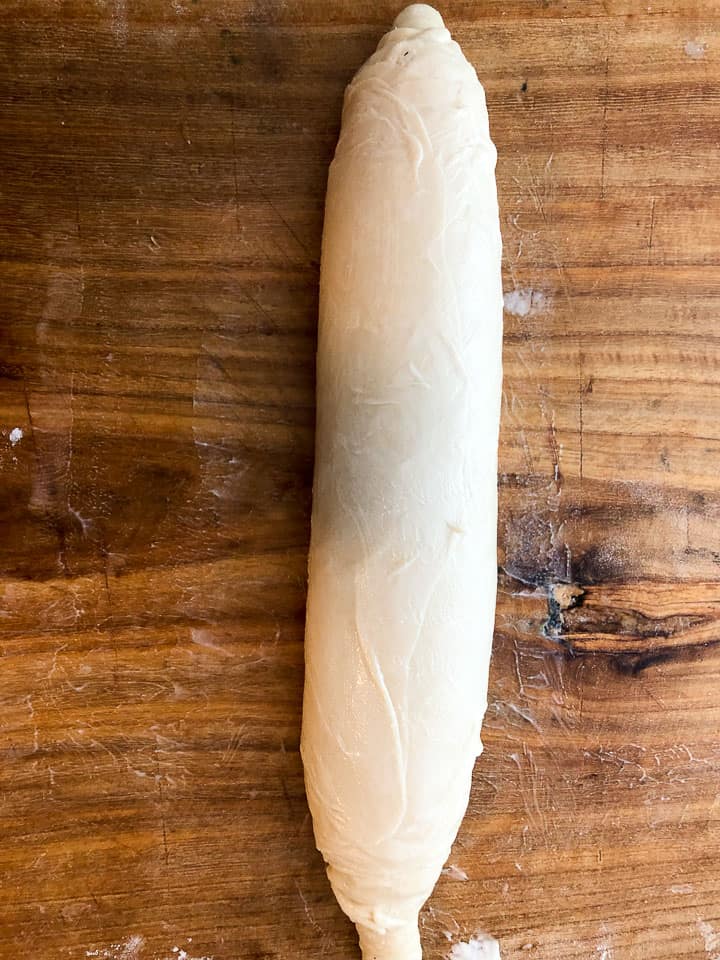
Suggested Schedule, Day 3 (lobster tail pastry)
Slice, Fill with Cream Puff Dough, and Bake (then fill again with whipped ricotta cream)
This shows how many slices I was able to make from the roll that I made. Also, roll is shown after I cut off the ends, which were pointy (see above). Final roll length was about 12 inches.
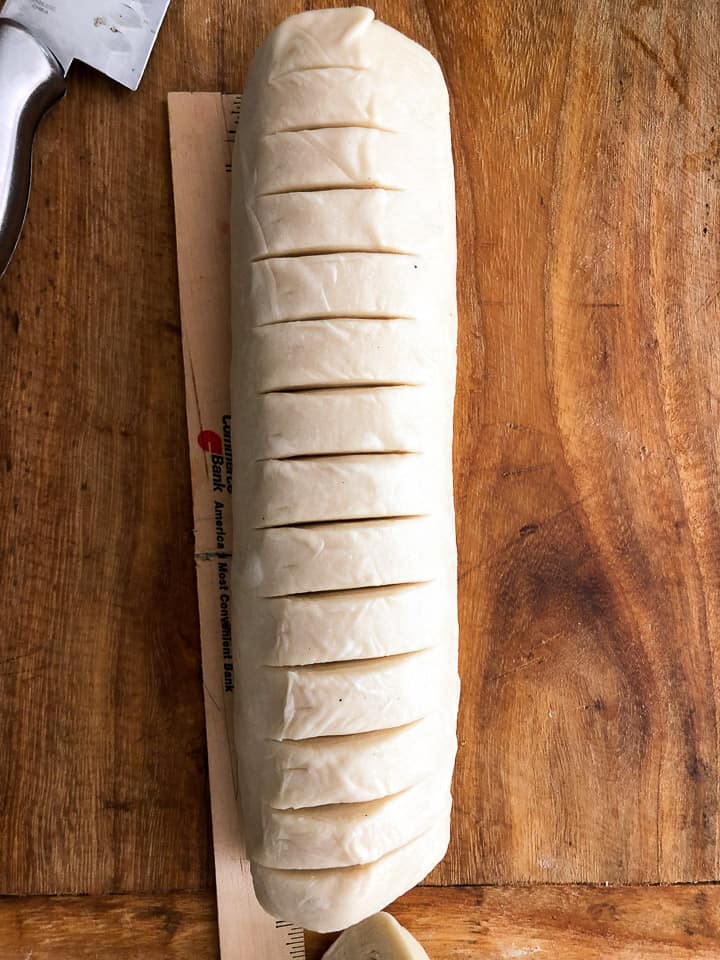
As you can see, after slicing, the inside suggests that I could have rolled this tighter.

This photo shows the slices after I flattened a bit with the palm of my hand (top center) and unflattened (bottom right). If it is summer and very hot, you may want to refrigerate the slices if the shortening melts too much.
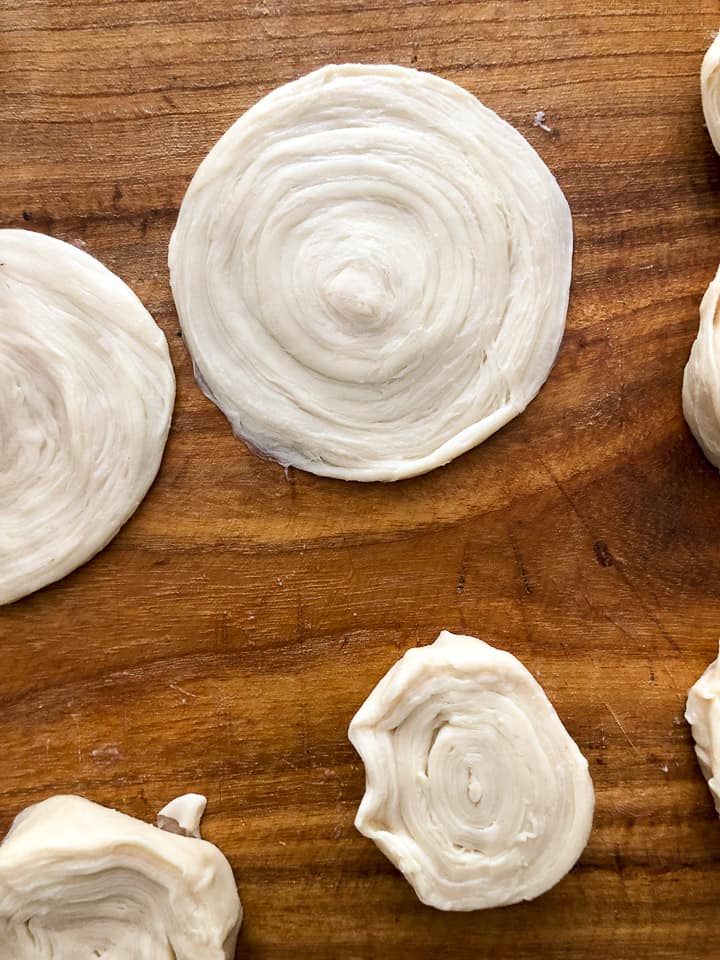
After flattening the slices, you will form a cone-like shape by pressing thumbs down into the sides and center gently.
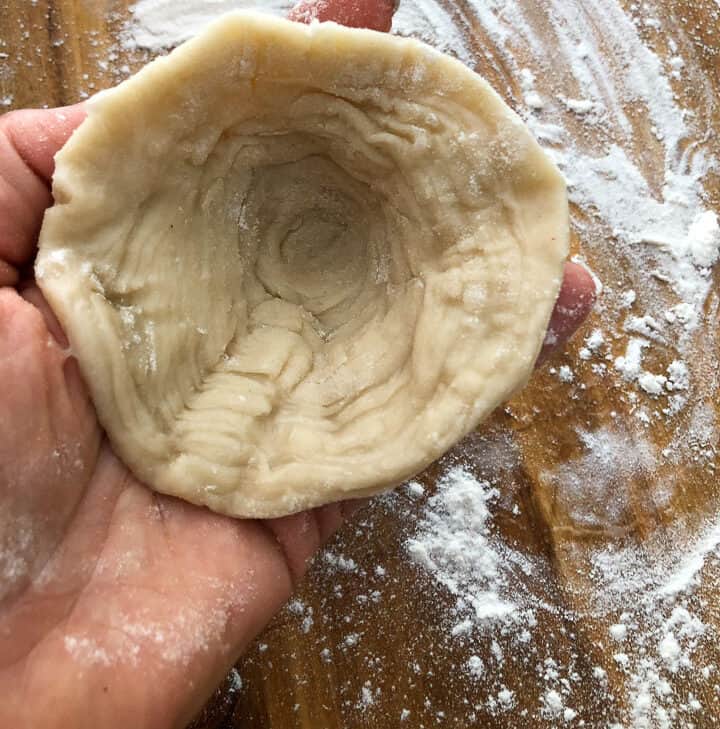
Fill with cream puff dough as shown here. Use a little more than shown here. Fill it up!
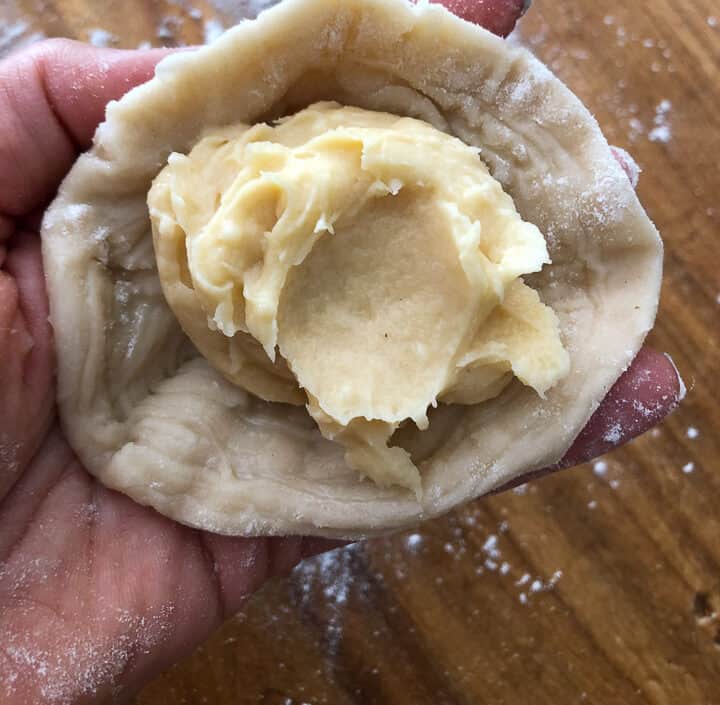
Place filled pastries on a baking sheet lined with a silicone mat or parchment paper. Do not crowd the pastries and they will expand quite a bit depending on how much filling you placed inside.
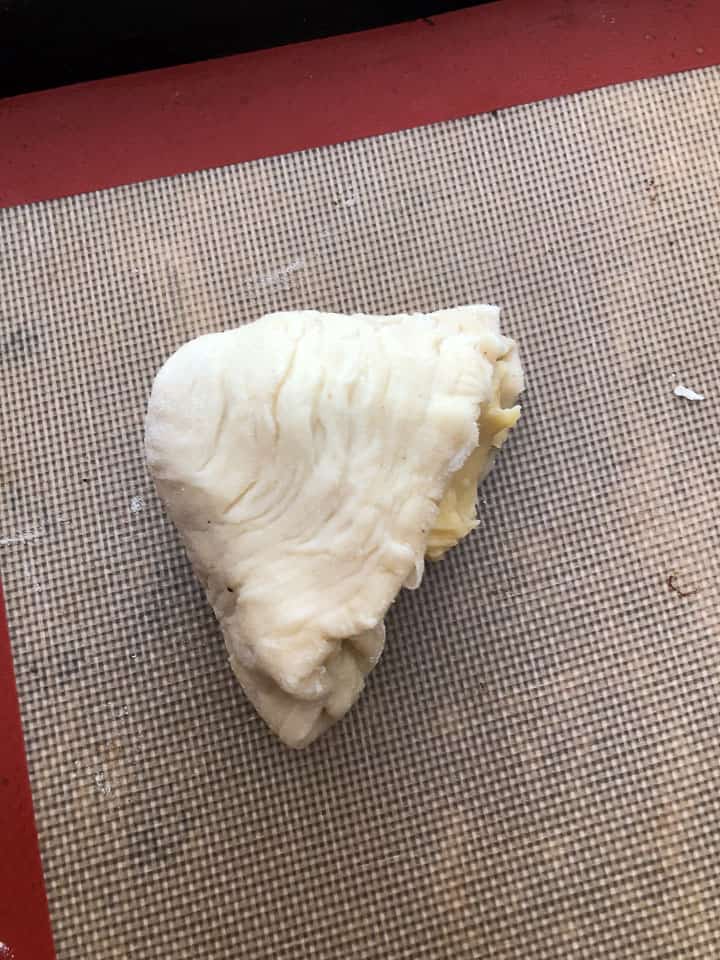
This one failed! As you can see, the interior (the cream puff dough) collapsed because I didn’t bake for the full 30 minutes. If this happens, they won’t look great but you can manage to “inflate” them but piping the cream into the center of the cream puff. My mistake was pulling these out of the oven too soon!
Watch the Cake Boss make his version of Lobster Tail Pastries
If you tried this recipe, please leave a 🌟 star rating and let me know how it went in the 📝 comments below! SUBSCRIBE for more recipes.
Recipe Card
📖 Recipe
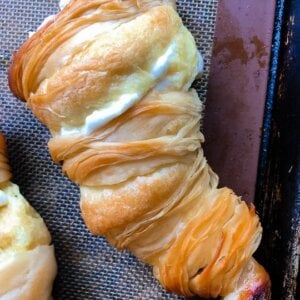
Lobster Tail Pastry
Equipment
- pasta machine (with motor ideally)
- baking sheets
- silicone baking mats or parchment paper
- pastry bag
Ingredients
Ingredients for the lobster tail pastry shells
- 500 grams all purpose flour *if using bread flour, add ~90 mls (6 tablespoons) of water
- 50 grams sugar
- 200 ml water
Ingredients to assemble the dough roll
- 150 grams shortening
Ingredients for the cream puff dough
- 230 grams unsalted butter (1 cup; 2 sticks)
- 473 ml water (2 cups)
- 1/2 tsp salt
- 240 grams all purpose flour (2 cups)
- 8 large eggs
Ingredients for the whipped cream ricotta filling
- 750 ml heavy whipping cream
- 1 tbsp vanilla
- 1/2 tsp cream of tarter
- 420 grams powdered sugar, divided
- 2 1/4 pounds ricotta cheese drained if necessary
Instructions
****Suggested schedule to make lobster tail pastry****
- Day 1: Mix dough for lobster tail pastry shell and refrigerate overnight
- Day 2: Process the dough into very thin sheets using the pasta machine and roll carefully into log form, grease the outside well, wrap with plastic wrap and refrigerate. Prepare cream puff dough, cool, cover and refrigerate.
- Day 3: Assemble pastries, make whipped cream ricotta filling, bake and cool pastries, then fill with filling
Day 1, To make the lobster tail pasty dough:
- Add dry ingredients of the dough to the bowl of a standing mixer and mix well. Add the water and mix until the dough forms. The dough will be very firm. Mix until well developed and you can pull a windowpane. Place in airtight container or plastic bag and refrigerate overnight.
Day 2, To form the lobster tail shell (rolling and greasing):
- Cut the dough into 4 pieces

- Roll out each piece until it is almost double in size; flour each side very well

- Place each piece through the pasta machine beginning with the setting of 0 and progressing to the setting of 6. Use flour to prevent sticking (see photo)

- Use a rolling pin to stage/hold the dough as it is extruded from the pasta machine, but make sure you flour it well or it will stick!

- Apply a thin coating of shortening to one side of the dough (I also pulled slightly to make it a bit wider than the standard pasta machine width before applying fat coating) and then roll tightly in jellyroll fashion. Pull toward you every so often as you roll to tighten the roll.

- Repeat this process until for each piece of dough and add each piece of thin rolled out, greased dough to the first until you have one big piece of rolled dough

- Grease the outside of the dough well with the shortening, wrap, and refrigerate overnight
Day 2, To make the cream puff dough:
- Sift flour and salt together in small bowl and set aside
- In a medium sized saucepan, melt the butter and water over high heat until the mixture reaches a vigorous boil
- Reduce heat to medium low and add flour/salt mixture all at once. Stir until the mixture pulls away from sides of pan and forms a ball
- Remove from heat and add eggs one at a time, beating vigorously between additions (I used a hand mixer for this)
- Place in bowl or plastic container, cover (airtight), and refrigerate.
Day 3, To make the whipped cream ricotta filling:
- In a medium size bowl, combine 1.5 cup heavy cream with 1.5 teaspoon vanilla, 1/2 teaspoon cream of tarter, 1.5 cup powdered sugar and whip until soft peaks form. Set aside.
- In another bowl, mix all remaining ingredients (1.5 cups heavy cream, 1.5 teaspoon vanilla, ~2 cups powdered sugar (scant), and all ricotta.
- Combine both mixtures and refrigerate until ready to use.
Day 3, To assemble:
- Remove the dough roll from the refrigerator and slice into approximately 14 to 18 pieces (about 1/2-inch thick slices) (I found this was difficult to slice, so I will try freezing for 20 min to firm up dough next time)

- Flatten each slice with the palm of your hand (see before and after photo here) and use just enough flour to prevent sticking but not more than necessary

- Form each circle into a cone by pushing down using both thumbs

- Fill each cone generously with the cream puff dough (a bit more than shown)(the more filling, the longer they will expand during baking)

- Place on baking sheet lined with parchment or silicone baking sheet (do not overcrowd the baking sheet as the pastries will expand during baking; if you run out of room in the oven, place pastries on baking sheet in refrigerator until ready to bake)

Day 3, To bake:
- Preheat the oven to Preheat oven to 450 degrees
- Bake at 450 for 15 minutes then reduce heat to 350 for an additional 20 minutes
- Ensure your pastries are golden brown before turning off oven or they will deflate/fall!
Day 3, To fill the lobster tails with whipped cream ricotta after baking:
- Pastries must be cooled before filling otherwise, filling will melt and become runny
- Using a knife, make a slit in the bottom of the pastries so that you can insert the pastry bag with filling
- Fill each pastry and set aside on a tray
- Sprinkle with powdered sugar if desired (I skipped this step)
Notes
- Diplomat cream
- Whipped cream with chocolate and cherries
- Hazelnut cream
- Always start with high heat to get them to puff up and cook long enough (30 min) or I find that they deflate! Also dough must be stiff and not runny. See more info here.
- Must use good flour! All purpose or bread flours such as King Arthur, Gold Medal, or Bob’s Red Mill.
- Use plenty of flour to prevent the dough from sticking as you run it through the pasta machine and roll it onto a rolling pin
- Ensure the dough is rolled thin enough (I process from 0 to 6 and then pull the dough gently to widen it a bit while applying the shortening
- Rolls tightly! Pull and roll, pull and roll (tightly)
- Bake until deep golden brown

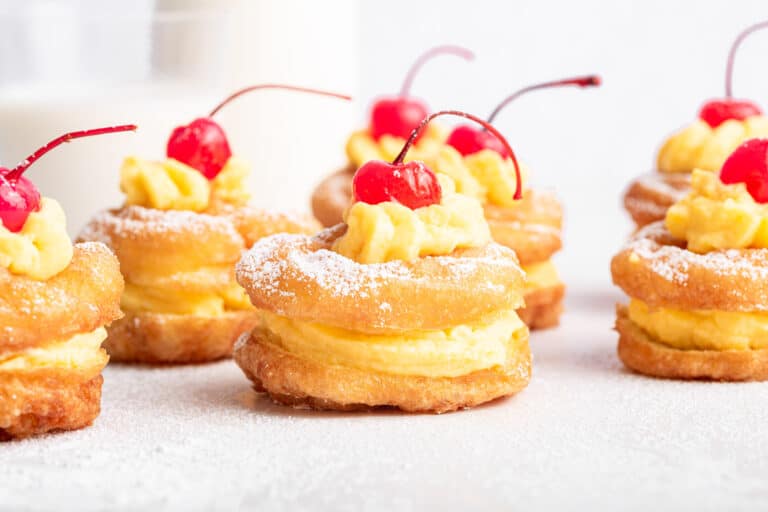
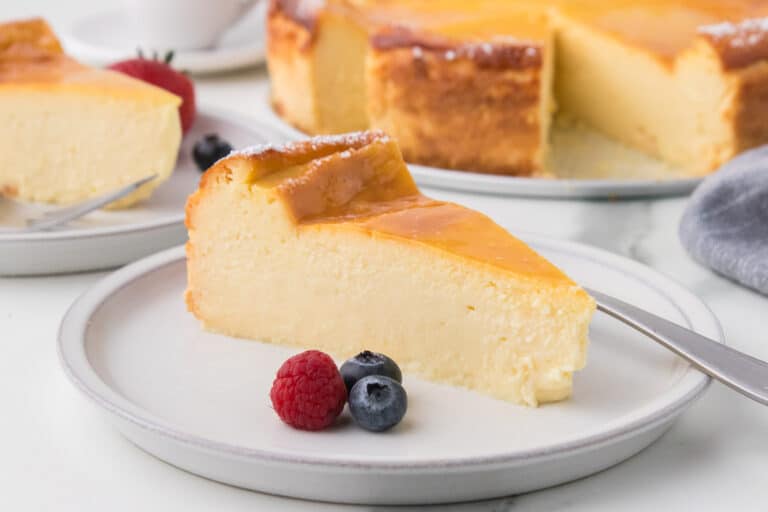
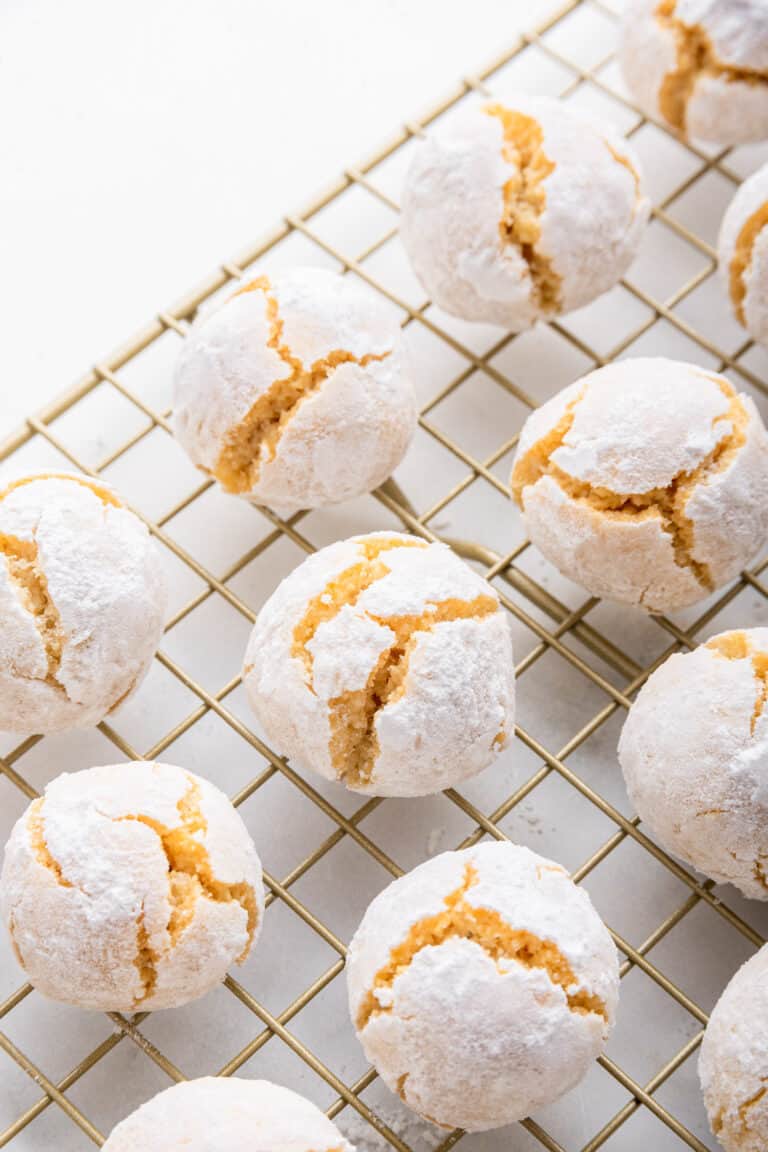

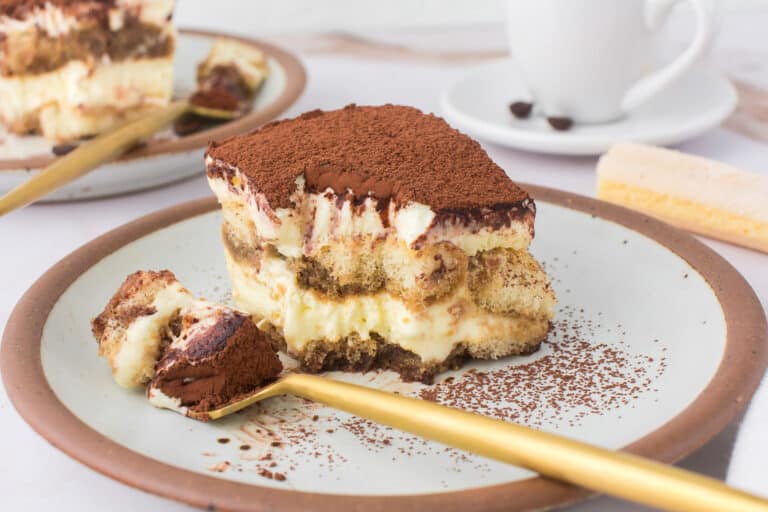

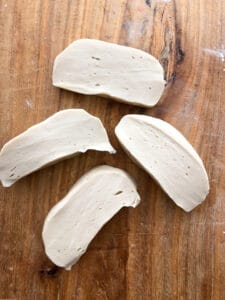
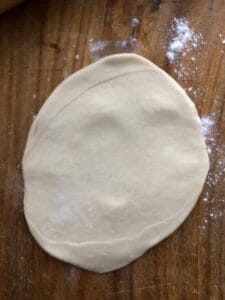
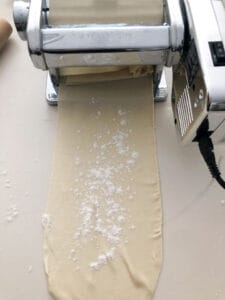
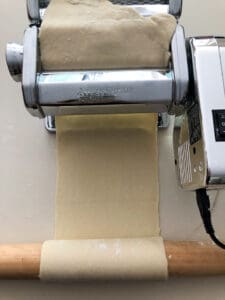
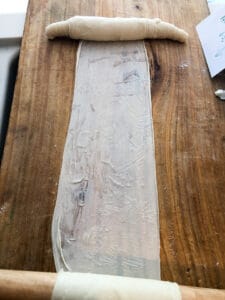

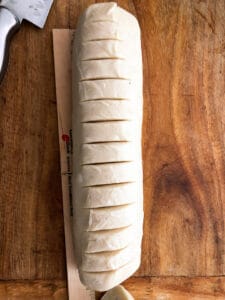
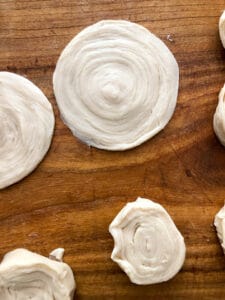
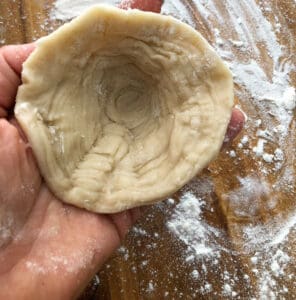
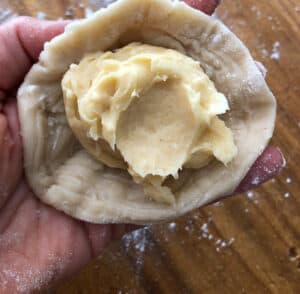
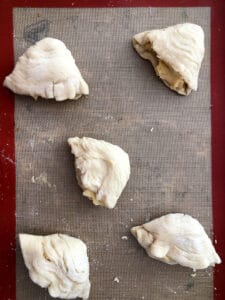
Ingredient list states 750 ml heavy cream but recipe calls for 1.5 plus 1.5 cups to make wc ricotta filling. That’s 3 total cups. 750 ml is just 2 cups. Please confirm. Ty for sharing!
Hi Peter, using Google conversion I see 750 ml is approximately 3 cups? 750 ml = 25 oz?
Hi I made these and followed your recipe, The only problem I had is that the cream puff dough inside did not fully cook. It expanded the lobster tail but it was still doughy inside. I was afraid to cook them longer because I was worried the tail would burn. Any suggestions,
Thanks
Florence
Hi, yes – I would either move the baking tray a little lower so they don’t get as much color too soon or I would cover loosely with foil after they are brown enough for you and keep baking until the inside is cooked. I haven’t had that problem so I’m wondering if maybe the tray was too high up in oven or is it possible your oven temp is running hot/too high?
Hello-
Can you bake the lobster tails with no filling and then fill them after?
Thanks!
So I’m a little confused by your question… The lobster tails are made with 3 main components: a crispy exterior dough, a cream puff dough, and the filling is like a diplomat cream. When you bake them you’d definitely have to fill them with the cream puff dough or else they will not puff up. Conversely, you can’t put the filling inside until their puffed up/after they are cooked. Does that help?
Hello. I am having difficulty getting my dough to a window pane consistency. I used the exact measurements per your recipe and the dough is extremely dry. Should I add more water? Also how long do you mix the flour, sugar and water in the stand mixture? I used the dough attachment. Should I use the paddle attachment?
Hi! Yes, the dough is quite dry – I’d recommend letting it rest a bit (covered with damp towel or in plastic) and then cutting it into several pieces (4 pieces) and rolling each piece with rolling pin. Roll and fold, roll and fold, roll and fold until you get a nice smooth dough. You can also let it rest between rolling, which helps. If you want the best possible result, I highly recommend a pasta machine. Check out the video for an overview and thanks for your question 🙂
Is it possible to make these all in one day? Or is it a must to refrigerate dough for so long?
I haven’t tried this personally because the recipe is so much work, but at a minimum I’d let dough rest (covered) for at least 30 minutes after mixing the dough and then after rolling, id wrap and refrigerate for at least 1 hour.
Thanks for sharing. These came out excellent. I really appreciate the metric measurements. I hate seeing recipes that use volumetrics. As a chef I thinks it’s vital to make a consistent product.
Hi – do you have to fill it with the puff pastry dough? Can you just bake ti without it and use more of the cream filling when it is done?
Do you mean the cream puff dough? They won’t puff up without the cream puff dough- you can search google for a recipe called sfogliate which uses a different filling. Either way, I don’t think the shells will puff up without something inside…
Hello, I really want to make this recipe, however I want to make it for the morning. Is it possible for me to shape the lobster tails and put in the cream puff dough the night before? That way I can wake up and bake it. Please let me know if this is possible!
Thank you,
Jessica Nower
Hi, I’m confused about the cream puff dough and ricotta filling. I didn’t see any photos after the filling goes in so I’m not sure how it works if the cream puff dough is already in there. If you’ve filled the pastry shell with the cream puff, how do you fill it with the ricotta after it’s taken out of the oven? Do you remove the cream puff, or just pipe the filling on top? Thank you
I think you’re asking when or how to fill the baked cream puffs? After you bake them, the inside of the cream puff is sort of hollow – you can either take a pastry bag that has been filled with the ricotta cream and pipe it right from the bottom or simply slice them in half and fill like a sandwich. Hope that helps
Hello again,
I ended up making them and they turned out absolutely delicious! My whole family loved them!
Yay! Glad you enjoyed – they are my favorite! That and Italian rum cake 🙂
I ACTUALLY made these! They are GREAT!!
I can’t stand reviews that say how nice they look But they didn’t “MAKE” them. I put cream puff dough into 3 disposable pastry bags and squirted flat to the point so just by doing that it helped stretch the dough out more. Filling is to die for. I ripped holes in sfogliatelle dough when stretching and rolling didnt really matter!
Use lots of shortening and don’t be afraid to stretch dough …my first try I used a different recipe TERRIBLE! This is a keeper! Thanks for posting!!
I’m glad you liked! The hardest part for me is getting the technique down …I’m still working to perfect mine. Might be time for me to make a new batch 🙂
Hello, can u send pics how it looks? Im making it dor the first time. Don’t know which recepie to choose, they all have the orange ricotta filling and i want the cream like lobster tail. I dont know how much puff dough to put so it won’t be with strong flavor of the puff dough . tnx.. Naama
I tried to include lots of pictures in the post and in the directions. I’m not sure what other picture would be helpful? Let me know and I’ll try to include it when I make them again.
Puff pastry dough has little flavor, after you make the cone with with the other pastry, fill it a little over 3/4 of the way this will ensure you will have plenty of puff. After there baked and cooled fill them with your choice of filling, I like Boston cream filling, just make a little hole/ slice at the bottom and fill from there. Hope this helps.